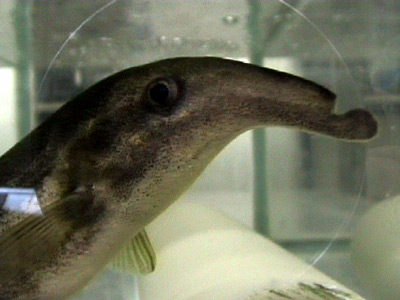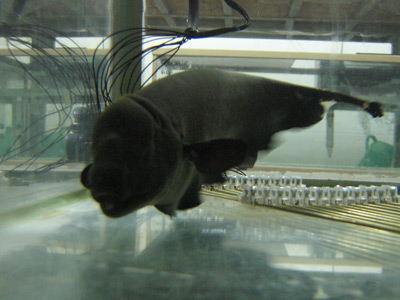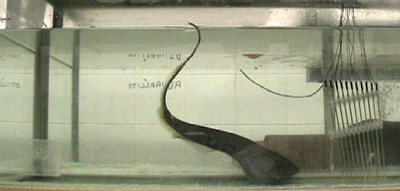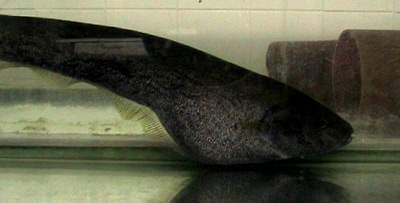![]()
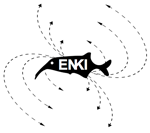 |
ENKi
Technology Experimental Bio-interfacing +44 (0) 7816 163 921 | info@enkitechnology.net |

![]() Electrogenic
Fish
Electrogenic
Fish
Electrogenic fish use electric fields in order to navigate and
communicate. They naturally emit either a continuous frequency
or electrical pulses, which they modulate in order to communicate
and interact with other fish. Because of this complex and unique
ability, proportionally these fish have a similar brain-to-body-mass
ratio as humans, the ability to see 'electrical images', to see
in complete darkness, to learn and memorize certain tasks. ENKI
is designed to work with any species of 'weakly' electrogenic
fish.
Why Electrogenic fish
Historically
there is a deep connection with electric fish and medical 'healing'
technologies. The project makes reference to the status of these electric
fish and the ethics of their use as neurological research tools; as
research specimens they become sacrificial to the greater purpose of
furthering human knowledge.
The phenomenon of "animal electricity" was first documented
in early Greek and Roman texts. For hundreds of years physicians were
routinely employing the use of electric fish electro-therapeutically
to treat a multitude of ailments. Later, in the late 1700s and with the
development of batteries in the late 19th century, electrotherapy became
a medical panacea; able to cure almost anything from cancer to baldness.
The earliest methods of treatment used the direct application of
electrical Torpedo fish to the human body; placing the affected
painful area, into
a pool of water containing fish. The resulting electrical shocks stunned
the nervous system allowing an immediate and residual numbness in the
extremity.
The deeper motivation for this project, relates to a long-term
interest in aquariums both public and private. A typical
tropical aquarium is a multi cultural space
- consisting of farmed and wild caught species. Aquariums are installed
as calming objects, though on closer inspection the contained
environment is one of both
aggressive conflict, tolerance and submission. The skill of the aquarium
keeper is to create harmony among fish - and through this;
craft
an impossible window
into an otherwise wild world by creating a controlled illusion of it."
|
 |
 |
|
 |
